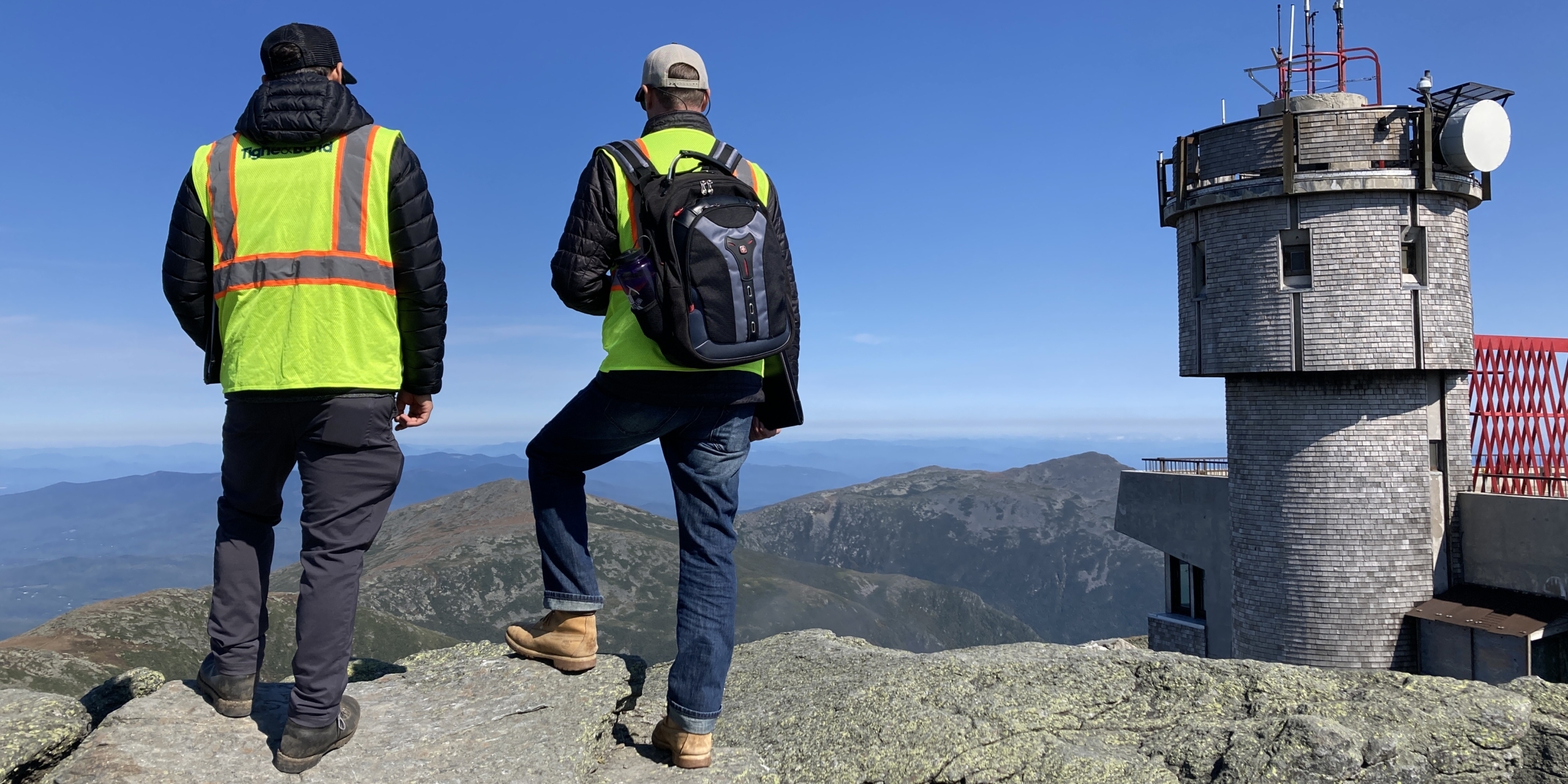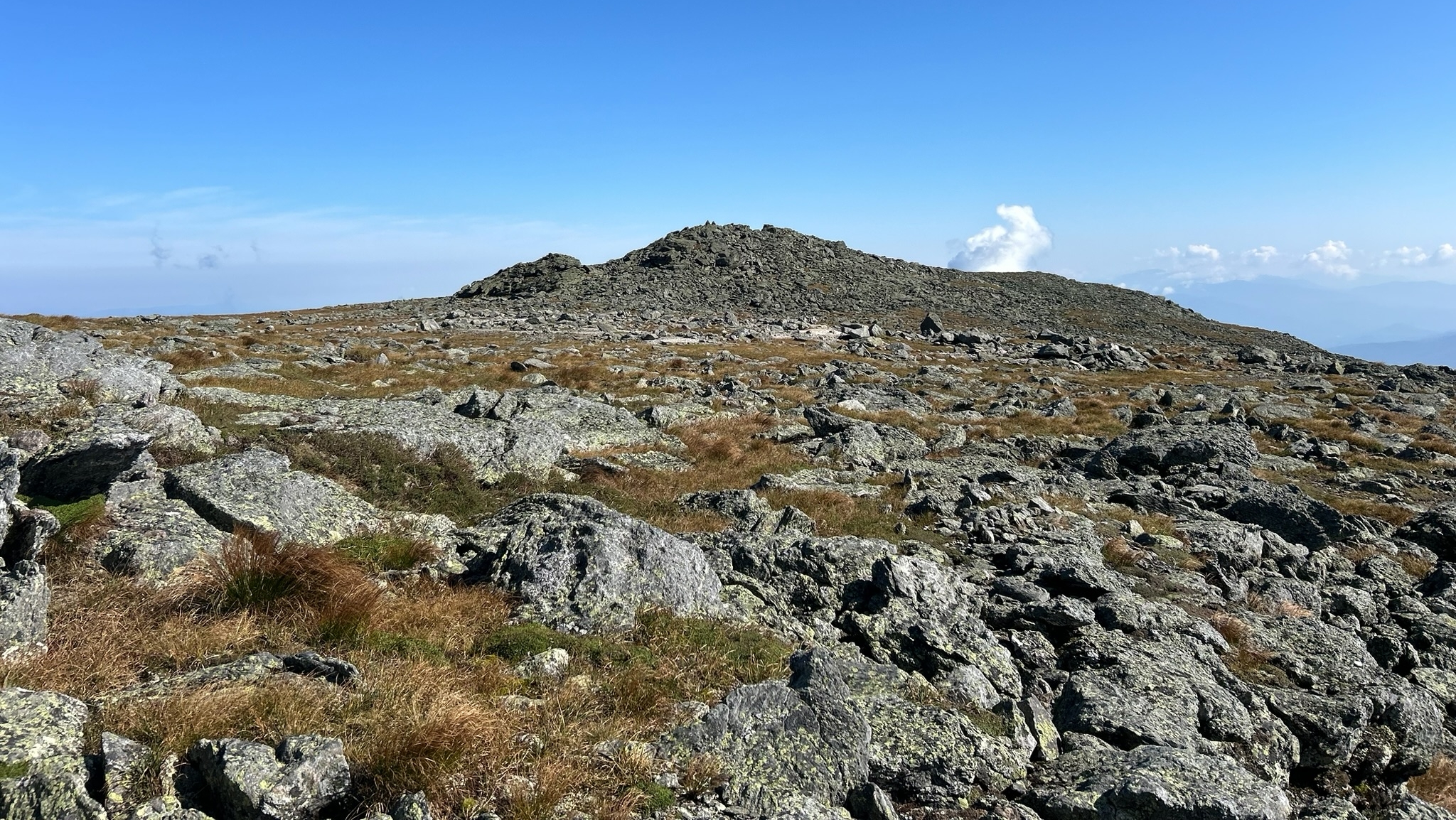NEAFWA 2025 Conference to Spotlight Mount Washington Summit Assessment

Tighe & Bond staff on site during field data collection.
With spring weather returning to the Northeast, Mount Washington State Park is once again approaching its busiest season. In planning for the future of Mount Washington’s summit, the New Hampshire Department of Natural and Cultural Resources (NH DNCR) engaged our firm to conduct an assessment of the natural resources, facilities, infrastructure, and visitor experience at the Mount Washington State Park. This comprehensive assessment, as an early implementation step of the 2022 Mount Washington Master Plan, will enable the New Hampshire Division of Parks and Recreation and the Mount Washington Commission to plan future efforts in their mission to restore, protect, and preserve the natural environment while maintaining an iconic visitor experience.
Stefanie Tetreault, who led the natural resources portion of the assessment, will co-present this effort with NH DNCR Capital Projects Administrator Albi Fioravante at the 2025 Northeast Association of Fish & Wildlife Agencies (NEAFWA) conference on April 24. The summit of Mount Washington is part of one of the largest zones of alpine tundra in the Eastern United States, a rare ecosystem that faces stressors including human activity, climate change, and the presence of non-native vegetation. The objective of the natural resources assessment is to document the current condition of Mount Washington State Park’s alpine environment as a baseline for due diligence and long-term planning.
Following desktop reconnaissance and preliminary site orientation, the project team divided the State Park into ten assessment areas (AA). Over the course of two days in August 2024, the field team documented observations of vascular plant species composition and abundance within each AA. They subsequently performed an ecological integrity assessment using a state-of-the-art scientific methodology. Evaluated metrics included land use, floristic quality indices, native and non-native plant species richness and abundance, soil / substrate characterization, and an analysis of ecosystem stressors including recreation, other human activity, and climate change. An outcome of this assessment is a letter rating for each of the ten assessment areas.
Stefanie and Albi’s presentation will discuss the preliminary findings of the natural resources assessment, as well as preliminary recommendations to preserve this precious alpine environment.

Felsenmeer barrens are a common natural community in the study area, characterized by the prominence of fractured, glacially deposited, rock.


